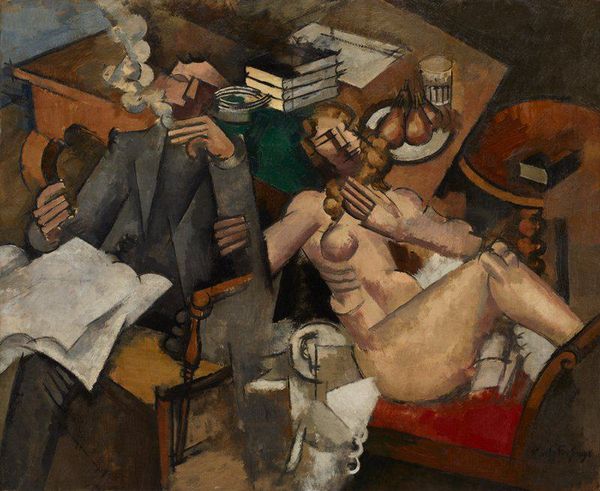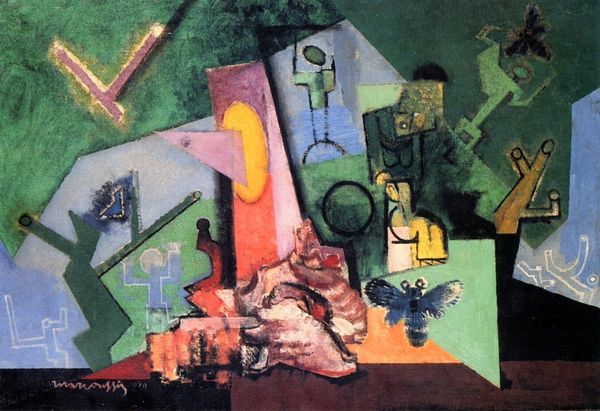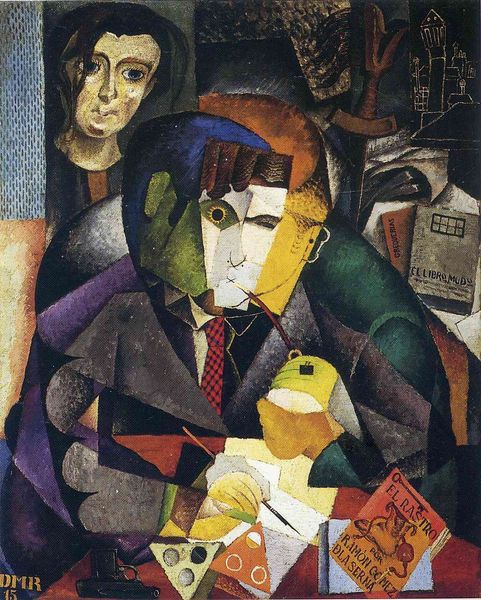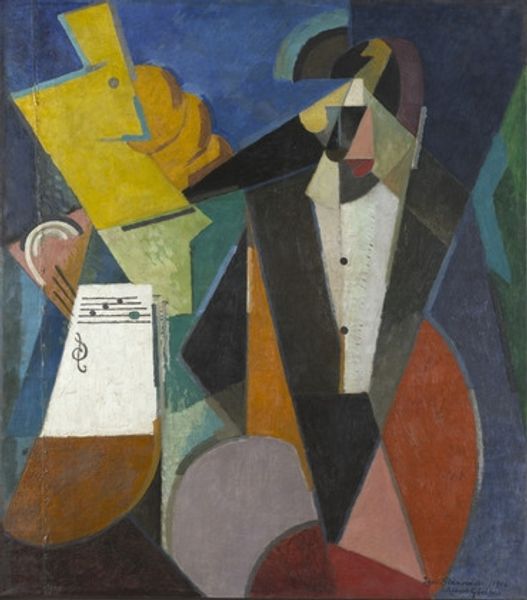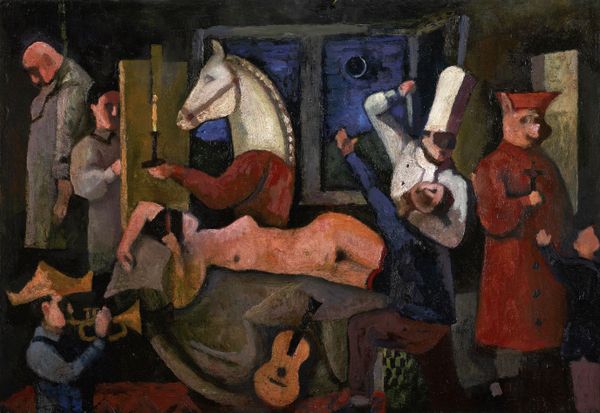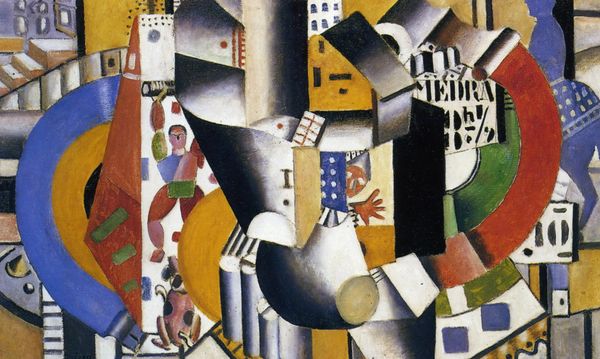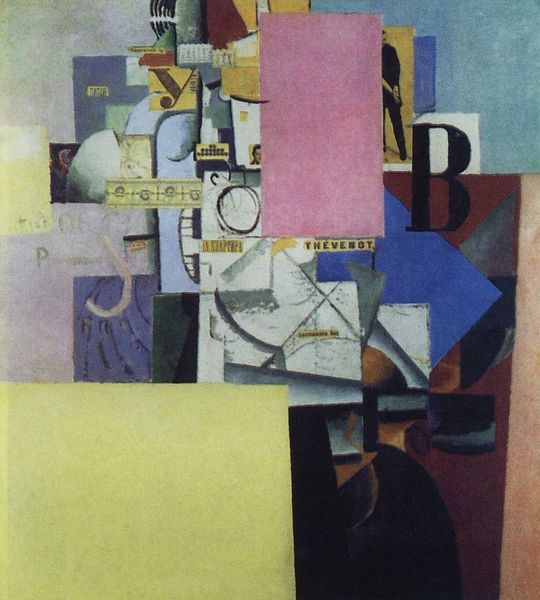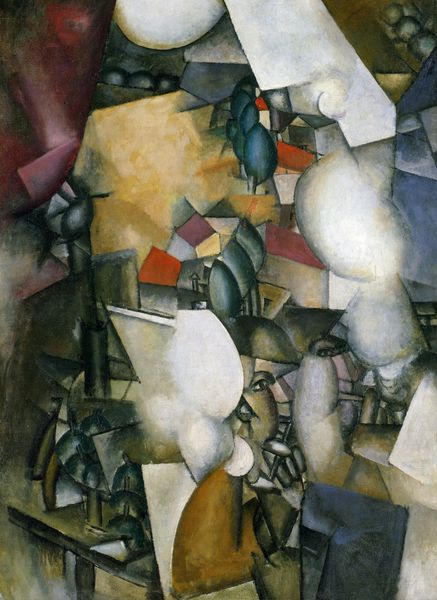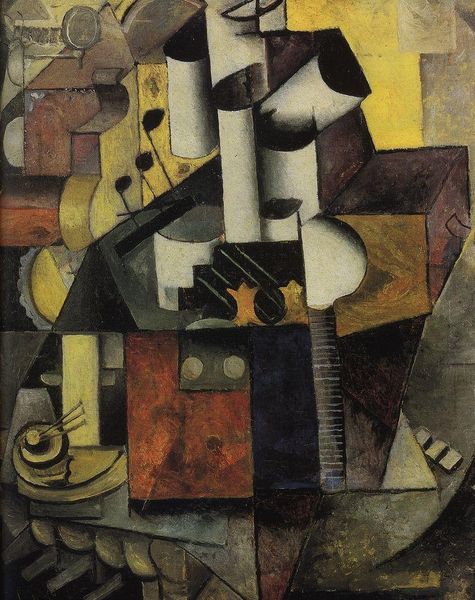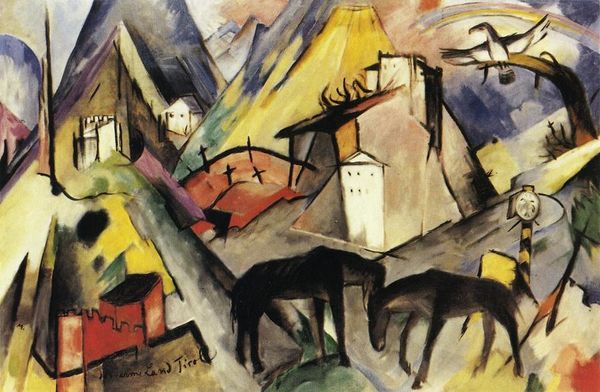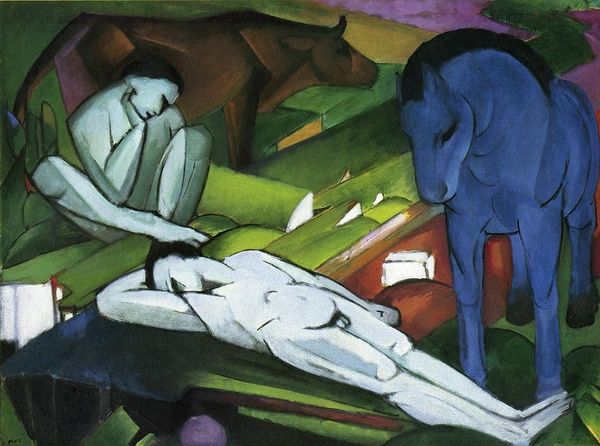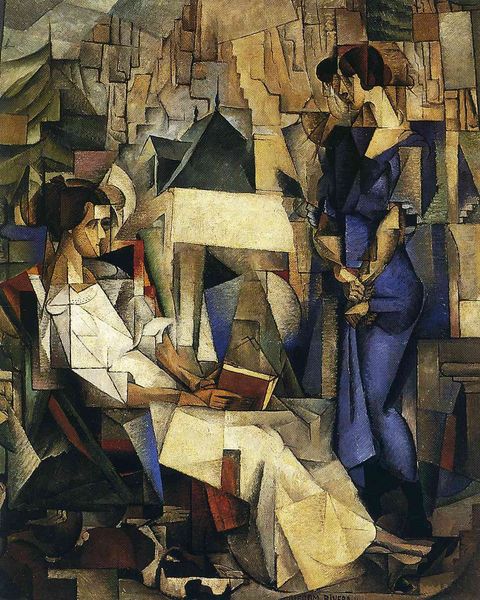
painting, oil-paint
#
portrait
#
cubism
#
painting
#
oil-paint
#
oil painting
#
intimism
#
group-portraits
#
nude
#
modernism
Copyright: Public domain
Editor: Here we have "Married Life," an oil painting by Roger de La Fresnaye, created in 1913. I find it a little… unsettling. There's this strangely geometric nude woman and a very proper gentleman, seemingly disconnected within the same space. What’s your take on this piece? Curator: The seeming disconnect is exactly the point! Consider the context: it's 1913, societal expectations around marriage were rigid. This isn't just a portrait; it's a statement on the roles people play. Notice how Cubism is used here—fragmentation mirroring the fragmented reality of modern relationships, specifically bourgeois relationships and marital tensions. Why do you think La Fresnaye chose to depict them in such contrasting styles, she nude and him in formal attire? Editor: Perhaps to emphasize their differing positions or roles? He’s confined by social expectation, represented by the suit, while she's... freer? Is it supposed to be empowering? Curator: Empowerment is one reading. Another perspective is examining the power dynamics inherent in the male gaze. He's actively observing; she's passively displayed, arranged almost as an object among the other domestic objects in the scene. Does this contrast challenge or reinforce those power structures? The book he’s holding could mean that he is an educated male that does the intellectual labor versus her role within the private sphere? Editor: That’s fascinating. So, it’s not necessarily a straightforward celebration of modern marriage, but more of a critical examination of its underlying dynamics and social constraints during that era? Curator: Precisely. The beauty of the artwork resides in these complexities, it sparks critical debate about socio-historical expectations related to men and women. Editor: I'll never look at another early modern painting the same way again! I appreciate you broadening my view beyond the aesthetic and digging into socio-political history! Curator: It's a perspective shift, and one that, in my opinion, adds layers of meaning to art that are really intriguing and not seen by many, which is why it’s so undervalued in the general field of art.
Comments
No comments
Be the first to comment and join the conversation on the ultimate creative platform.
